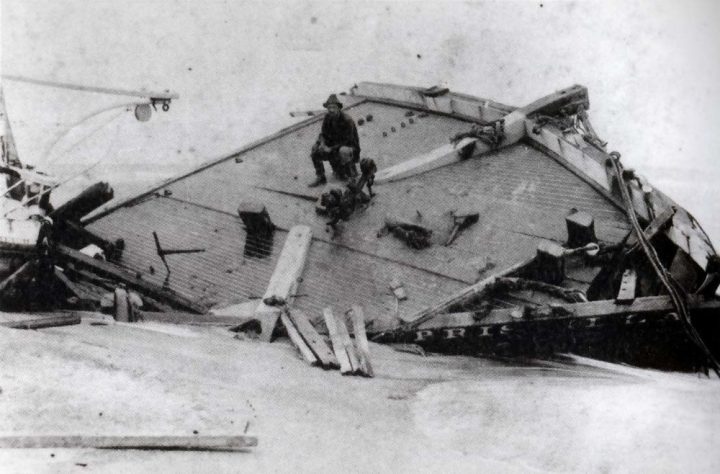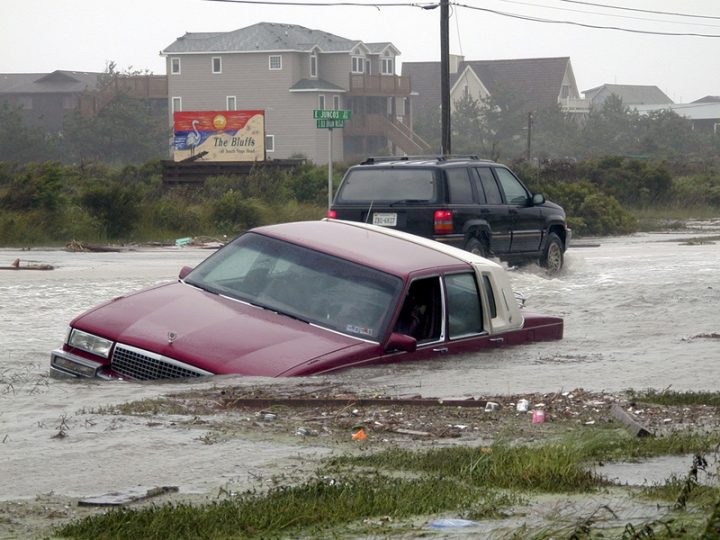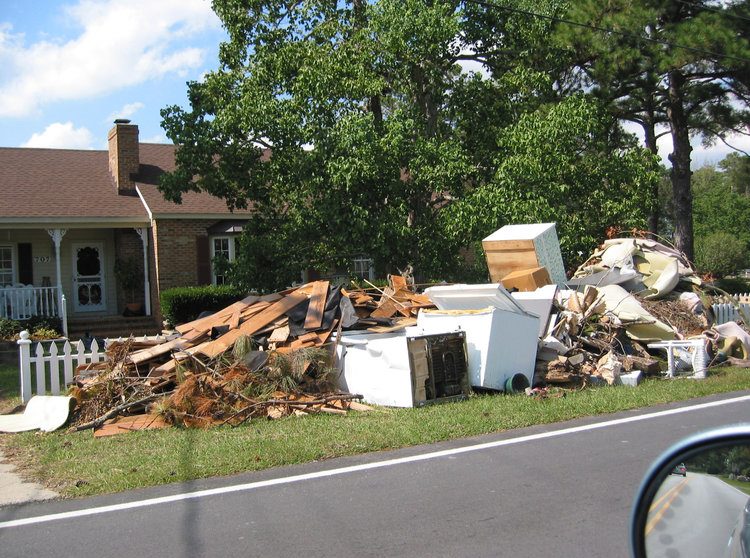HARKERS ISLAND – Communities in eastern North Carolina have for centuries shared the common experience of bracing for, facing and recovering from major storms.
These experiences are captured by photographs, recorded by area papers and especially passed down from generation to generation through stories and traditions.
Supporter Spotlight
The Core Sound Waterfowl Museum and Heritage Center has collected accounts and artifacts from the storms that have molded the coast into what it is today and has compiled “Harm’s Way: How Storms Have Shaped Our Communities, Our History and Us,” an exhibit and online resource that tells how the last hundred-plus years of storms have affected Hatteras, Ocracoke and Down East Carteret County.
The exhibit, a permanent display in the museum gallery, opens 6 p.m. June 21 during the museum’s monthly community night, which begins with a potluck and is followed by the program.
The online resource features newspaper clippings, photography, personal accounts, publications and reports from the storms that have impacted North Carolina’s coast since the late 1800s. The online exhibit is to be continually updated as stories and artifacts are shared with the museum. To contribute to the online archive, contact the museum by email at museum@coresound.com.
“Harm’s Way” is a collaborative effort with Long Island Traditions, an organization that “documents and preserves Long Island’s contemporary maritime and farming culture through the region” of Long Island, New York. There, communities are documenting their own storm stories, in particular the response and recovery from the 2012 Super Hurricane Sandy, according to museum officials. The parallel exhibitions compare and contrast these traditional communities, explore common practices, shared attitudes and cultural resilience in preparation of, during and through the recovery from major storms.

Museum Executive Director Karen Willis Amspacher said that the constant threat of storms, nor’easters, high tides and inlet changes make this not just a history project but a documentary of history as it’s happening. She’s hopeful it will encourage communities to learn more about how to prepare for weather threats.
Supporter Spotlight
“Over the years as we have collected oral histories, many of them are filled with storm stories, so our online archive became a way of pulling those together as a more focused research tool,” Amspacher continued. “Jay Barnes, the state’s hurricane historian, helped launch this research, and since then we have collected videos, newspaper clippings, family photos and images from local archives to build a resource that captures how storms have truly ‘shaped’ us.”
Barnes, hurricane historian and director of development for the North Carolina Aquarium Society, said there’s much to be learned from looking back at hurricane history.
“A closer look at past storms helps us better understand the risks we face with each new hurricane season,” he said. “The ways the storms have affected us, the ways our communities have prepared and responded, the realization that each storm can be very different from the last — all can help us prepare for the next time. The overriding lesson? Our hurricane problem is permanent and repetitive, but we can still plan, prepare and take the threat seriously.”
Amspacher said she hopes that the exhibit helps coastal communities recognize their own storm traditions, examine their history, consider the future and “Be proud of our strong community ties that keep us together during these times.”
The exhibition in the museum is interpreted using the terms “response, recovery and resilience,” Amspacher said. Highlights of the exhibit include the Cape Lookout light, a storm-tracking chart for children and a listening station to hear the oral histories from the men and women of Hatteras, Ocracoke and Down East Carteret County.
Other elements include a WRAL documentary on Hurricane Hazel; an hour-by-hour description of the great Atlantic hurricane of 1944, which resulted in 389 deaths and the equivalent of more than $1.4 billion in damage in 2018 dollars; a research area to learn more about the state’s storm history; and a public information resource from Carteret County Emergency Management with guidelines for preparing for this year’s storm season.

Community night will begin with a covered-dish dinner at 6 p.m. with an opportunity to visit the “Harm’s Way” exhibition and the program focused on the exhibit opening will begin at 7 p.m. Stories and images from Long Island and the Northeast and from Hatteras, Ocracoke and Down East Carteret County are to be shared. A group discussion is planned on issues such as response, recovery and resilience, how storm stories affect communities, how responses to storms change over time and the role of community during a storm. Nancy Solomon, director of Long Island Traditions, is to be on hand for the opening.
Amspacher met Solomon in 2004 at the Smithsonian Folklife Festival in Washington, D.C. Their organizations were part of the festival’s Mid-Atlantic Waterways Maritime Communities program.
“Nancy was overwhelmed with the aftermath of Super Storm Sandy, especially the ‘resiliency’ of the local fishing communities,” Amspacher explained. “We talked for several years about how the fishermen always know what to do how they are the first ones back up and running, how they help their communities.”
Amspacher continued that it was Solomon’s vision for both communities to share their stories and to “reaffirm the common thread of hard work, the traditional generational understanding of the storms, the working peoples’ determination to hold onto their communities.”
Amspacher said that she and Ernie Foster of Hatteras visited with the Long Island, New York, communities last year to share the stories of Down East, Ocracoke and Hatteras storms.

“He (Foster) told about Isabel on Hatteras Island, I told about Diamond City and how my grandparents moved to higher ground,” she said. “For us, Down East, Ocracoke and Hatteras storms have had an even more distinctive impact, shaping our communities physically and culturally.”
Solomon told Coastal Review Online that in 2012 when Superstorm Sandy struck Long Island, New York, “We learned firsthand how coastal communities cope and recover from natural disasters, hundreds of years after North Carolinians, who have coped with nor’easters and hurricanes for generations.
“Working with local tradition bearers including fishermen and baymen, boatbuilders and duck hunters, Long Island Traditions learned how traditional knowledge can help save coastal communities,” she said.
With funding from the National Endowment for the Arts, Solomon said they partnered with Amspacher, and decided that a multi-faceted exhibit would allow for an exploration of how coastal communities along the East Coast have similar traditions and practices in preparing for storms and hurricanes, and coping methods.
“We worked together to bring the voices of local residents and traditional fishermen and baymen to the forefront, something we hope continues in the public domain, where coastal planners often ignore the traditional knowledge of community residents,” she said. “The exhibit ‘In Harm’s Way’ at the Long Island Museum in Stony Brook engaged planners, architects, traditional fishermen and baymen, and coastal residents and their families. We look forward to the Core Sound Museum’s ‘Harm’s Way’ exhibit and programs.”
The above playlist includes curated videos that accompanied The Long Island Traditions exhibit.









